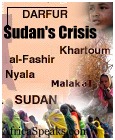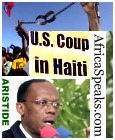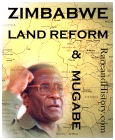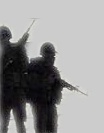 |






 AfricaSpeaks Weblog AfricaSpeaks Weblog
 Rootswomen Weblog Rootswomen Weblog
 Rootsie's Weblog Rootsie's Weblog
|
Defining the Resistance in Iraq
Posted: Monday, November 10, 2003
It's not Foreign and It's Well Prepared
by Scott Ritter, Christian Science Monitor
DELMAR, N.Y. - In the Baghdad suburb of Abu Ghraib is a compound on an abandoned airstrip that once belonged to a state organization known as M-21, or the Special Operations Directorate of the Iraqi Intelligence Service. As a UN weapons inspector, I inspected this facility in June of 1996. We were looking for weapons of mass destruction (WMD). While I found no evidence of WMD, I did find an organization that specialized in the construction and employment of "improvised explosive devices" - the same IEDs that are now killing Americans daily in Iraq.
When we entered the compound, three Iraqis tried to escape over a wall with documents, but they were caught and surrendered the papers. Like reams of other documents stacked inside the buildings, these papers dealt with IEDs. I held in my hands a photocopied primer on how to conduct a roadside ambush using IEDs, and others on how to construct IEDs from conventional high explosives and military munitions. The sophisticated plans - albeit with crude drawings - showed how to take out a convoy by disguising an IED and when and where to detonate it for maximum damage.
Because WMD was what we were charged with looking for, we weren't allowed to take notes on this kind of activity. But, when we returned to our cars, we carefully reconstructed everything we saw.
What I saw - and passed on to US intelligence agencies - were what might be called the blueprints of the postwar insurgency that the US now faces in Iraq. And they implied two important facts that US authorities must understand:
• The tools and tactics killing Americans today in Iraq are those of the former regime, not imported from abroad.
• The anti-US resistance in Iraq today is Iraqi in nature, and more broadly based and deeply rooted than acknowledged.
* * *
IEDs are a terrifying phenomenon to the American soldiers patrolling Iraq. The IED has transformed combat into an anonymous ambush, a nerve-racking game of highway roulette that has every American who enters a vehicle in Iraq today (whether it be the venerable, and increasingly vulnerable, Humvee, or an armored behemoth like the M-1 Abrams tank) wondering if this ride will be their last.
Far from representing the tactics of desperate foreign terrorists, IED attacks in Iraq can be traced to the very organizations most loyal to Saddam Hussein. M-21 wasn't the only unit trained in IEDs. During an inspection of the Iraqi Intelligence Service's training academy in Baghdad in April 1997, I saw classrooms for training all Iraqi covert agents in the black art of making and using IEDs. My notes recall tables piled with mockups of mines and grenades disguised in dolls, stuffed animals, and food containers - and classrooms for training in making car bombs and recruiting proxy agents for using explosives.
That same month, I inspected another facility, located near the wealthy Al Mansur district of Baghdad, that housed a combined unit of Hussein's personal security force and the Iraqi Intelligence Service. The mission of this unit was to track the movement and activities of every Iraqi residing in that neighborhood straddling the highway that links the presidential palace with Saddam International Airport.
A chilling realization overcame us when we entered a gymnasium-sized room and saw that the floors were painted in a giant map of the neighborhood. The streets were lined with stacked metallic "in-box" trays - each stack represented a house or apartment building. A three-story building, for example, contained three levels of trays; each tray contained dossiers on each citizen living on that floor. Similar units existed in other neighborhoods, including those deemed "anti-regime."
Hussein's government was - and its remnants are - intimately familiar with every square inch of Baghdad: who was loyal, where they live, and who they associated with. (The same can be said about all of Iraq, for that matter, even the Kurdish and Shiite regions.) This information allows officials from the remnants of Hussein's intelligence and security services to hide undetected among a sympathetic population. Indeed, a standard quotient among counterinsurgency experts is that for every 100 active insurgents fielded, there must be 1,000 to 10,000 active supporters in the local population.
Though the Bush administration consistently characterizes the nature of the enemy in Iraq as "terrorist," and identifies the leading culprits as "foreign fighters," the notion of Al Qaeda or Al Ansar al Islam using Baghdad (or any urban area in Iraq) as an independent base of operations is far-fetched. To the extent that foreigners appear at all in Baghdad, it is likely only under the careful control of the pro-Hussein resistance, and even then, only to be used as an expendable weapon in the same way one would use a rocket-propelled grenade or IED.
The growing number, sophistication, and diversity of attacks on US forces suggests that the resistance is growing and becoming more organized - clear evidence that the US may be losing the struggle for the hearts and minds of the Iraqi people.
To properly assess the nature of the anti-American resistance in Iraq today, one must remember that the majority of pro-regime forces, especially those military units most loyal to Hussein, as well as the entirety of the Iraqi intelligence and security forces, never surrendered. They simply melted away.
Despite upbeat statements from the Bush administration to the contrary, the reality is that the Hussein regime was not defeated in the traditional sense, and today shows signs of reforming to continue the struggle against the US-led occupiers in a way that plays to its own strengths, and exploits US weakness.
For political reasons, the Bush administration and the Coalition Provisional Authority (CPA) haven't honestly confronted this reality for fear of admitting that they totally bungled their prewar assessments about what conditions they would face in postwar occupied Iraq.
The failure to realistically assess the anti-American resistance in Iraq means that "solutions" the US and CPA develop have minimal chance of success because they're derived from an inaccurate identification of the problem.
The firestorm of anti-US resistance in Iraq continues to expand - and risks growing out of control - because of the void of viable solutions. Unless measures are taken that recognize that the tattered Hussein regime remains a viable force, and unless actions are formulated accordingly, the conflict in Iraq risks consuming the US in a struggle in which there may be no prospect of a clear-cut victory and an increasing possibility of defeat.
• Scott Ritter, a former UN weapons inspector in Iraq (1991-1998), is author of 'Frontier Justice: Weapons of Mass Destruction and the Bushwhacking of America.'
Reproduced from:
http://www.csmonitor.com/2003/1110/p09s02-coop.html
 Printer friendly version Printer friendly version
 Send page by E-Mail Send page by E-Mail
|








